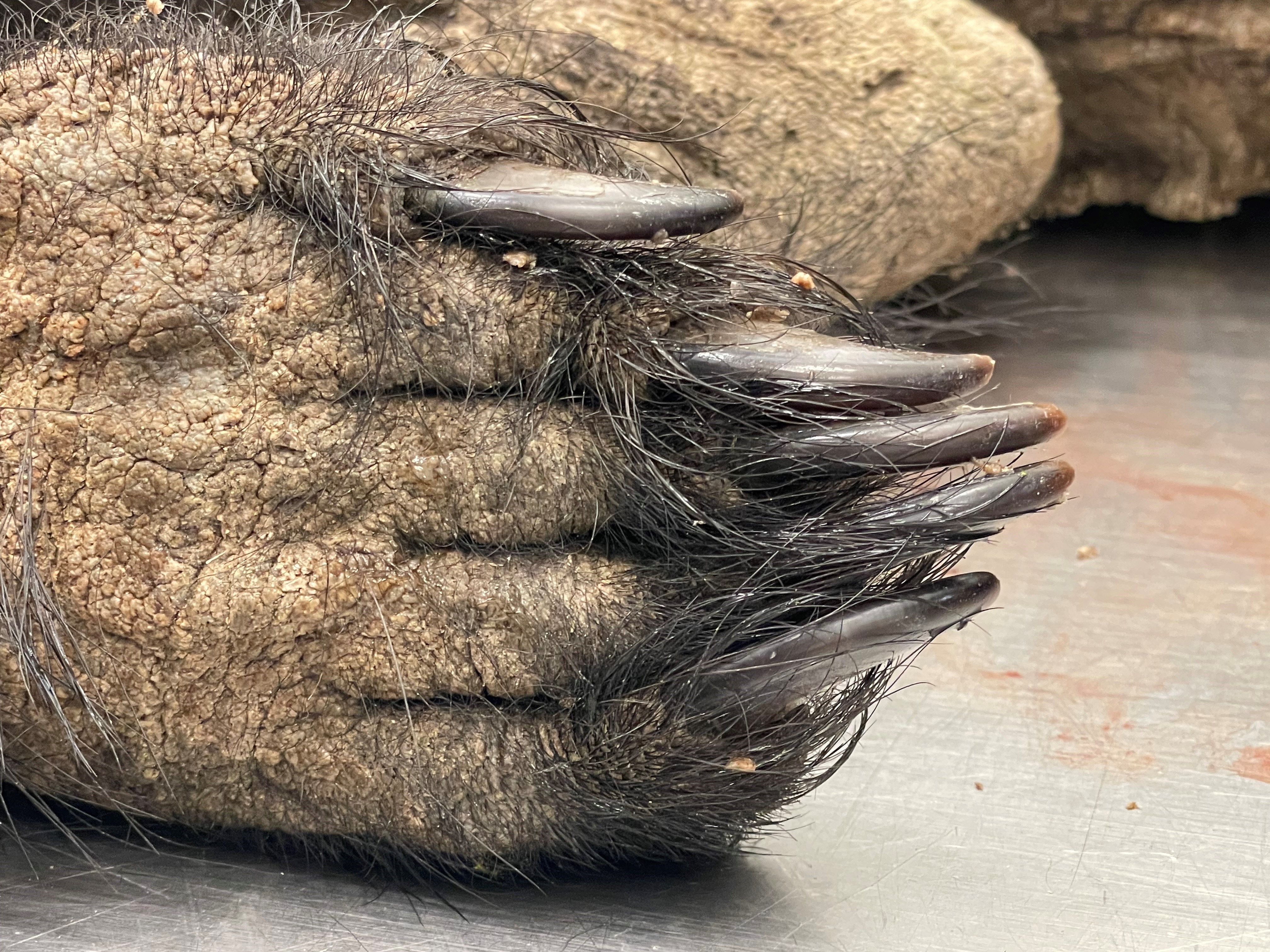Mange is a skin disease that affects mammals caused by microscopic mites that burrow into skin.
There are different species of mites that can cause the disease. Sarcoptic mange can affect wild and domestic mammals and is often reported in wild canids such as red foxes, coyotes, gray wolves, and red wolves. Notoedric mange is generally host specific to squirrels and has been reported in the western gray squirrel, eastern gray squirrel, fox squirrel, and rarely in bobcats. Demodectic mange, also called demodicosis, has been reported in many mammalian species including white-tailed deer, mule deer, elk, and black bears.
Clinical signs vary by type but a common sign is hair loss.
Sarcoptic mange signs often include hair thinning and hair loss and thickening and wrinkling of the skin. Scabs and foul-smelling crusts result from secondary infections with bacteria and yeast. Notoedric mange results in hair loss in affected squirrels that begins over the chest and shoulders and progresses to affect the entire body. Demodectic mange signs include hair loss and dry, flakey, thickened skin. Disease is more severe in stressed animals with weakened immune systems or poor nutrition.
Transmission occurs when a host becomes infected by direct contact with an affected animal or by coming into a contaminated environment like burrows or nests where free-living mites can survive for several weeks in high humidity and low temperatures.
Mites can be identified by examining skin scrapings from affected animals under a microscope. Differences in appearance can help determine the type of mite.
Oral administration of Ivermectin can treat mange but is not typically used in free-ranging wildlife because of the need for repeat treatments several weeks apart.
There are several species of mites that can cause mange, the most common is Sarcoptes scabiei which cause sarcoptic mange. Notoedres centrifera and several species of the genus Demodex can cause notoedric mange and demodectic mange, respectively but the appearance is similar.
There is a variety of S. scabiei mite that causes scabies in people, and people can sometimes become infected with animal varieties of S. scabiei after direct contact with infected wild animals or pets. These infections are usually self-limiting infections and only last about 10-14 days. Sarcoptic mange has also been reported in black bears, porcupines, rabbits, squirrels and raccoons. In NY State it may be increasing in black bears.
Demodex mites are normal inhabitants of the skin of all mammals but the mites can sometimes cause damage. There are several Demodex species that are mostly host-specific but some species can affect closely related mammals.
Sarcoptic and notoedric mites have similar transmission and life cycles. A host becomes infected by direct contact with an affected animal or by coming into a contaminated environment like burrows or nests where free-living mites can survive for several weeks in high humidity and low temperatures.
Once infected, the mites burrow into the outer layer of skin and form tunnels where females lay their eggs. In 3 or 4 days, the eggs hatch into larvae, which either remain in the tunnels or move to the surface of the skin. The larvae develop into nymphs in 3 to 4 days and then into adults in another 5 to 7 days. The complete life cycle of a male take 13 to 16 days and a female about 18 to 23 days.
Species of Demodex mites inhabit hair follicles and associated glands. The mites are most likely transmitted from mother to young
With sarcoptic mange, the head is usually most severely affected and in more severe cases the lesions can cover the trunk and limbs. Advanced cases can result in severe hair loss and systemic bacterial infections with emaciation, depression, hypothermia and death. Skin changes on the face may result in blindness, impaired hearing, and difficulty eating.
Notoedric mange can be fatal in squirrels particularly in the winter months in which loss of the insulating layer of fur would expose them to the cold.
In healthy animals, Demodex mites do not usually cause clinical signs.
Topical treatments that can kill mites for extended periods after a single dose may be more effective. Some healthy animals may resolve their mange without intervention.






